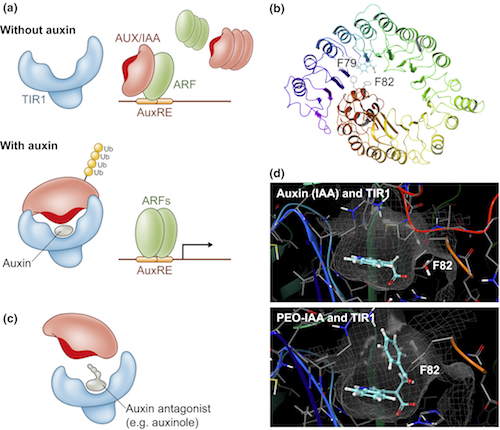Hormones designed in the lab through a technique combining chemistry, biology, and engineering might be used to manipulate plant growth in numerous ways, according to a study published in New Phytologist.
Scientists harnessed the power of synthetic chemistry to design compounds similar to auxin, a small chemical hormone that controls nearly all aspects of plant growth, development, and behaviour.

Structural insight into auxin perception and the rational design of auxin antagonists.
These compounds might be used for various agricultural purposes, for example for manipulating the ripening of fruit crops or for preventing the undesirable spread of transgenes (genes that have been transferred from one organism to another) in the field.
“It is truly gratifying as a plant biologist that collaboration with synthetic chemists could yield such a game-changing tool," said lead author Dr. Keiko Torii, of the University of Washington, in Seattle. "With a new version of auxin and its engineered receptor, we could possibly pinpoint the desired auxin action in target plants or tissues of interest without disrupting the physiology of other plant parts or neighbours.”
Read the paper: Torii, K. U., Hagihara, S., Uchida, N. and Takahashi, K. (2018) Harnessing synthetic chemistry to probe and hijack auxin signaling. New Phytologist. doi: 10.1111/nph.15337
From a Wiley press release.
Parts of this page may have been imported from a previous website. If you spot any errors on this page please contact us using the link below.
